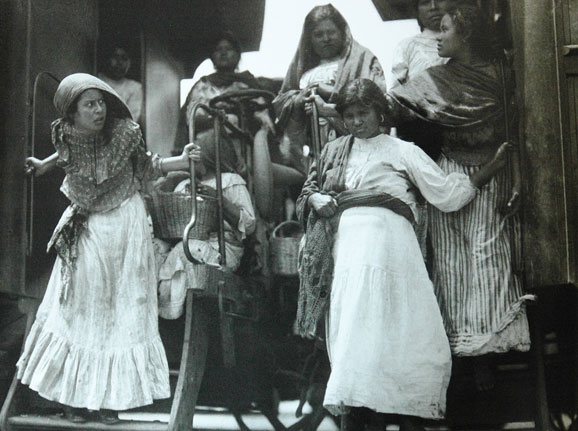Soldadera: The Tiny Things They Carried

*I enjoyed reading this immensely. Soldaderas have always been a figment of the past in my mind, frozen images of iconic Casasola photographs. This piece is from June of this year, written shortly after the oldest, sole surviving soldadera passed away near Guadalajara, Mexico. She was 127 years old. The stories … VL
![]() By Moises Medina, KCET
By Moises Medina, KCET
Inspired by Nao Bustamante’s exhibition, Soldadera – the artist’s “speculative reenactment” of women’s participation on the front lines of The Mexican Revolution — Artbound is publishing articles about the exhibition’s development, historical contexts engaged by this project, and writing inspired by the work. Soldadera was guest curated for the Vincent Price Art Museum by UC Riverside professor Jennifer Doyle, and is on view from May 16 - August 1, 2015.
Leandra Becerra Lumbreras was the last known survivor of the Mexican Revolution, the last living soldadera. In January, I travelled to Zapopan, Mexico with the artist Nao Bustamante, who has been learning about the women who fought in the Mexican Revolution. In the fall, stories about her longevity appeared in the news — she was then 127 years old, and in these stories, she was identified as the leader of a battalion of Adelitas. The artist took me on her pilgrimage to meet Leandra. I was part of Bustamante’s team: facilitating conversation, translating — language and history — this was my role.
Just months later, in March 2015, Leandra would move on to the next world. She did not go without a fight.
Leandra by design or circumstance was an independent person. She had a great capacity for love, though she never married. Up until recent years, she lived with her octogenarian daughter, who took care of her until she passed. Leandra then begrudgingly relocated to Zapopan (a suburb of Guadalajara) to live with one of her numerous relatives. She says the Mexican Revolution saw her fighting with “tortillas en vez de tiros” (loosely: tortillas instead of bullets), as one of the many women who played a logistical role as soldiers, nurses, spies, and cooks. After the Revolution she was one of the few women to receive an ejido, a communal land grant, in the agrarian land reform that followed.
As the story is told, much to the chagrin and warning of other women, with babes in arms she lined up with other men demanding that she too receive compensation in the form of land for her military service. Men pushed her while woman berated her but she held steadfast, vocally insisting that she had bled, fought, and mothered children of the revolution, but silently taking large steps toward reaching some semblance of gender parity in Mexico. The certainty of these details are unclear, but maybe for her family it gives a historical context for Leandra’s prickly disposition.
Click HERE to read the full story.
[Photo courtesy of El Archivo Casasola]

